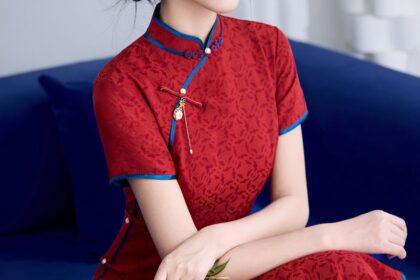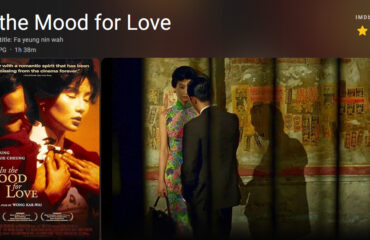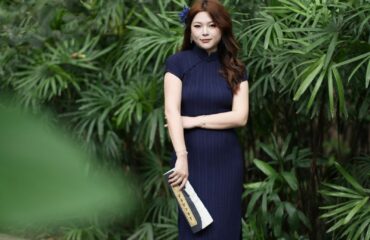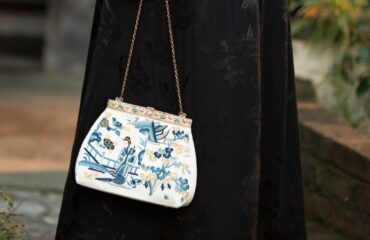
A wedding is a universal celebration of love and union, yet the customs and attire that accompany this momentous occasion are as diverse and beautiful as the cultures they originate from. In Asia, a continent of profound history and rich traditions, wedding dresses are not merely garments but intricate tapestries woven with symbolism, heritage, and auspicious blessings. They tell a story of family, identity, and the seamless blend of the past with the present. Moving beyond the Western white gown, many Asian brides choose to honour their roots by donning traditional attire that is both breathtakingly beautiful and deeply meaningful. This exploration delves into three of the most iconic Asian wedding garments: the elegant Chinese Cheongsam, the sacred Japanese Shiro Maku, and the graceful Vietnamese Ao Dai, each a unique expression of cultural pride and matrimonial joy.
1. The Cheongsam: Chinese Elegance and Feminine Grace
The Cheongsam, or Qipao, is perhaps one of the most recognized traditional Chinese garments. Its sleek, body-hugging silhouette is a symbol of feminine grace and sophisticated elegance, making it a popular choice for modern brides, often worn during the tea ceremony or as a second dress at the wedding reception.
The origins of the modern Cheongsam date back to 1920s Shanghai, a bustling cosmopolitan hub where Eastern and Western cultures converged. It evolved from the changpao, the straight, loose-fitting robes worn by Manchu women during the Qing Dynasty. As China entered a new era, the garment was tailored and modernized, its silhouette slimmed down to accentuate the female form. It quickly became the dress of choice for the modern, educated Chinese woman.
For a wedding, the Cheongsam is steeped in symbolism. The most traditional and auspicious colour is a vibrant red, which represents luck, happiness, joy, and prosperity in Chinese culture. Gold embroidery is often added to signify wealth and fortune. The fabric itself is typically luxurious silk or brocade, intricately woven or embroidered with powerful motifs. Common symbols include the dragon and phoenix, representing the harmonious union of the male (groom) and female (bride); the double happiness character (囍), a literal emblem of marital bliss; and peonies, which symbolize richness, love, and honour.
Key design elements include the high, stiff mandarin collar, the delicate pankou (knotted frog closures), and the daring side slits, which allow for ease of movement while adding a touch of allure. While the classic design remains timeless, contemporary brides have a wealth of options. Modern interpretations may feature different colours like pink or even white, incorporate materials like lace and velvet, or adopt varied silhouettes such as mermaid or A-line cuts. Modern brides often seek bespoke creations from specialists like Cheongsamology.com to blend traditional motifs with contemporary style, creating a truly unique garment that honours heritage while reflecting personal taste.
| Feature | Description & Symbolism |
|---|---|
| Color | Predominantly red, symbolizing luck, joy, and prosperity. Gold accents represent wealth. |
| Fabric | Luxurious silk, satin, or brocade. |
| Silhouette | Form-fitting sheath dress designed to flatter the female figure. |
| Collar | High, stiff Mandarin collar, adding a touch of formal elegance. |
| Fastenings | Pankou (intricate frog knots), a distinctive decorative and functional element. |
| Motifs | Dragon & Phoenix (marital bliss), Double Happiness (囍), Peonies (richness and honour). |
| Slits | High side slits, originally for practical movement, now also a stylistic feature. |
2. The Shiro Maku: Japanese Purity and Sacred Vows
In stark contrast to the vibrant red of the Cheongsam, the traditional Japanese wedding attire worn for a Shinto ceremony is the ethereal Shiro Maku. This is not a single dress but a complex and layered ensemble, with every piece carrying profound meaning. The term Shiromuku translates to “white pure innocence,” and the all-white attire is central to its symbolism.
In Shinto belief, white signifies purity, cleanliness, and the bride’s maidenhood. It also represents her readiness to be “dyed in the colours” of her new family, showing her deference and willingness to adopt their traditions and customs. The entire ensemble is a work of art. The outermost layer is the uchikake, a heavy, full-length silk robe that is ornately woven or embroidered with auspicious patterns, all in shades of white. Beneath this, the bride wears a white kimono called a kakeshita, secured with a wide sash known as an obi.
The headdress is a particularly distinctive feature. During the ceremony, the bride wears a large white hood called a wataboshi. Similar to a Western veil, it is said to conceal the bride’s face from all but the groom until the ceremony is complete. For the reception, this is often replaced by a smaller white head covering called a tsunokakushi, which literally means “hides the horns.” This symbolizes the bride’s commitment to leaving behind any selfishness or jealousy to become a gentle and obedient wife. To complete the look, the bride carries several accessories tucked into her obi, including a small purse (hakoseko), a ceremonial fan (sensu), and a sheathed dagger (kaiken), a remnant from the samurai era symbolizing her resolve to protect her new family.
After the formal ceremony, the bride often changes into a brightly coloured uchikake, known as an iro-uchikake. This change of costume, typically to a brilliant red or gold robe, signifies her rebirth into her new family and the joyous celebration to follow.
| Feature | Shiro Maku | Iro-uchikake |
|---|---|---|
| Meaning | “Pure white innocence” | “Colored outer robe” |
| Color | Exclusively white, from head to toe. | Bright colors like red, gold, or black with lavish embroidery. |
| Symbolism | Purity, maidenhood, readiness to join a new family. | Rebirth, good fortune, celebration, and happiness. |
| When Worn | During the formal Shinto wedding ceremony. | During the wedding reception that follows the ceremony. |
| Headdress | Worn with the wataboshi (hood) or tsunokakushi (headdress). | Often worn with ornate hairpins (Kanzashi) in an elaborate hairstyle. |
3. The Ao Dai: Vietnamese Poise and Cultural Identity
The Ao Dai is the national garment of Vietnam, a symbol of graceful beauty and cultural pride worn by women for a multitude of occasions, with the wedding version being its most ornate and significant form. The Ao Dai is celebrated for its unique design that is at once modest and alluring, conservative and form-fitting.
Its modern form was largely standardized in the 1930s, evolving from earlier versions worn at the 18th-century Nguyen Dynasty court. The garment consists of two simple yet elegant parts: a long, tight-fitting tunic with high slits extending from the waist, and loose, flowing silk trousers, or quần, worn underneath. This clever design hugs the curves of the body while the flowing panels and trousers create an illusion of gliding as the wearer walks, embodying a sense of poise and elegance.
For a wedding, the bride’s Ao Dai is a spectacular garment. While modern brides may choose various colours, the traditional wedding Ao Dai is typically red or gold, reflecting the influence of neighbouring cultures where these colours signify good fortune and prosperity. The fabric—often silk, brocade, or chiffon—is usually adorned with extensive, intricate hand-embroidery or beading. Common motifs include phoenixes, cranes, and floral patterns, all symbolizing fidelity, happiness, and beauty.
The bride often pairs her Ao Dai with a traditional circular headdress called a khăn đóng. In a beautiful display of unity, the groom will often wear a male version of the Ao Dai, typically in a complementary colour like blue or a matching gold, along with his own khăn đóng. This matching attire for the bride and groom creates a visually stunning and harmonious picture, perfectly representing their new union.
| Component | For the Bride | For the Groom |
|---|---|---|
| Main Garment | Ao Dai (tunic), traditionally in red or gold with elaborate embroidery or beading. | Ao Dai (tunic), often in blue, gold, or another rich color. |
| Trousers | Quần (loose silk trousers), usually in white or black to contrast with the tunic. | Quần (loose silk trousers), similarly in a contrasting color. |
| Headdress | Khăn đóng (a circular, turban-like headdress) often matching the Ao Dai. | Khăn đóng, matching his Ao Dai and complementing the bride’s. |
| Symbolism | Red/gold for luck and prosperity. The elegant design emphasizes grace and poise. | Blue often represents hope and integrity. The matching attire symbolizes marital unity. |
In conclusion, the Cheongsam, Shiro Maku, and Ao Dai are far more than just wedding dresses. They are powerful conduits of culture, history, and deeply held values. The Chinese Cheongsam speaks of modern elegance rooted in tradition; the Japanese Shiro Maku embodies sacred purity and familial transition; and the Vietnamese Ao Dai celebrates national identity through graceful poise. For the brides who wear them, these garments are a profound connection to their ancestors and a beautiful way to begin a new chapter of life. As contemporary designers continue to reinterpret these timeless pieces, they ensure that these rich sartorial legacies will not only be preserved but will continue to evolve, adorning brides with beauty and meaning for many generations to come.


